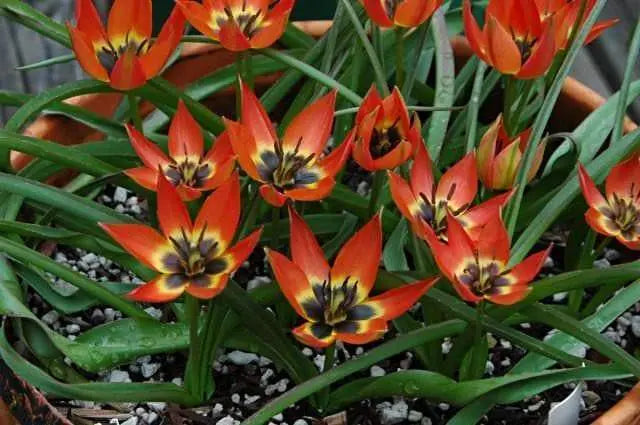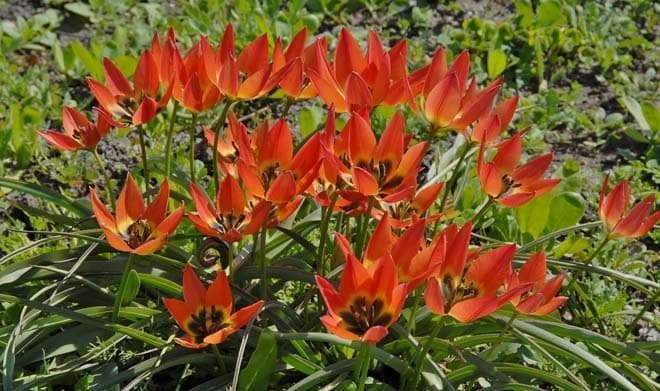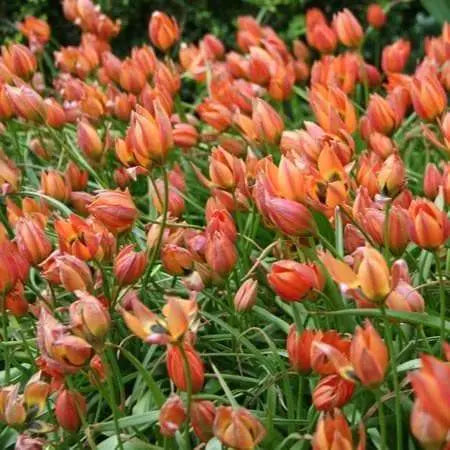
Little Princess "Species Tulip BULBS, PERENNIAL
Original price
$ 3.22
-
Original price
$ 19.48
Original price
$ 3.22
$ 3.22
-
$ 19.48
Current price
$ 3.22
Most orders are processed by the next day
Select your desired size and/or color from the available options.
Tulip Little Princess, Delight to see in the Garden , A very reliable species tulip,
A truly splendid addition to any border or naturalized area, the 'Little Princess' Botanical Tulip makes quite a statement with its dark centers, ringed in bright yellow before fading to a pumpkin-orange. These short tulips readily perennialize and even withstand the hunger of deer and rodents in most cases! Represents perfect love and eternal happiness!
Detailed Description
Miniature Tulip Flower Bulbs "Little Princess". Nothing could be cuter than this little tulip with its orange-red petals with distinct yellow markings outlining the almost black centers of each bloom. If planted in well-drained soil, these little beauties will be happy to stay in place all year. Bulb Size: 5/7 cm
GROWING
In addition to the large cultivated tulips, there are also what are known as botanical tulips. These tulips are particularly suitable for garden planting since they can remain undisturbed in the soil after flowering and will emerge again next year! Botanical tulips are also referred to as wild tulips or dwarf tulips due to their low height. Their height is one of the factors that makes them perfect for planting in a flower bed as well as in rock gardens and special little spots. With so many different varieties to choose from, they can create a real riot of color in the garden or even in flower containers. Over the years, botanical tulip varieties have often been awarded the flower bulb of the year title. This says a lot about their rising popularity! The sizes of these bulbs are 6 to 10 cm. smaller than most tulip bulbs but their numbers will easily increase year after year. Botanical tulips are not just exceptionally beautiful flowers in their own right but can also be combined with other spring-blooming flowers. These stunning tulips should be planted in the autumn. Choose a sunny spot for them, and you will be enjoying their profusion of flowers from April to June. You can also leave them undisturbed and they will pop up again the following year for another wonderful display.
A truly splendid addition to any border or naturalized area, the 'Little Princess' Botanical Tulip makes quite a statement with its dark centers, ringed in bright yellow before fading to a pumpkin-orange. These short tulips readily perennialize and even withstand the hunger of deer and rodents in most cases! Represents perfect love and eternal happiness!
Detailed Description
Miniature Tulip Flower Bulbs "Little Princess". Nothing could be cuter than this little tulip with its orange-red petals with distinct yellow markings outlining the almost black centers of each bloom. If planted in well-drained soil, these little beauties will be happy to stay in place all year. Bulb Size: 5/7 cm
GROWING
In addition to the large cultivated tulips, there are also what are known as botanical tulips. These tulips are particularly suitable for garden planting since they can remain undisturbed in the soil after flowering and will emerge again next year! Botanical tulips are also referred to as wild tulips or dwarf tulips due to their low height. Their height is one of the factors that makes them perfect for planting in a flower bed as well as in rock gardens and special little spots. With so many different varieties to choose from, they can create a real riot of color in the garden or even in flower containers. Over the years, botanical tulip varieties have often been awarded the flower bulb of the year title. This says a lot about their rising popularity! The sizes of these bulbs are 6 to 10 cm. smaller than most tulip bulbs but their numbers will easily increase year after year. Botanical tulips are not just exceptionally beautiful flowers in their own right but can also be combined with other spring-blooming flowers. These stunning tulips should be planted in the autumn. Choose a sunny spot for them, and you will be enjoying their profusion of flowers from April to June. You can also leave them undisturbed and they will pop up again the following year for another wonderful display.
LET OUR CUSTOMER SPEAK FOR US

![[Seeds] - Caribbeangardenseed](http://caribbeangardenseed.com/cdn/shop/files/gift-card-gift-card-1_1024x1024_dfa857db-9150-4315-a362-7f0bb3fb9c47_60x28.png?v=1703978838)

